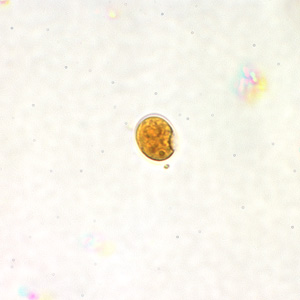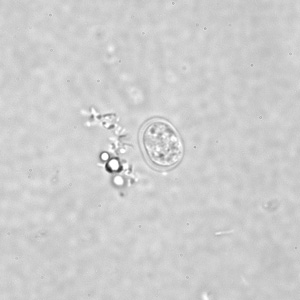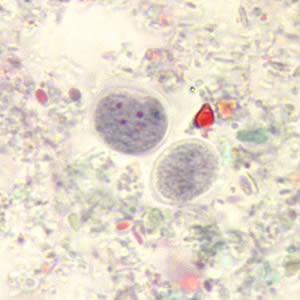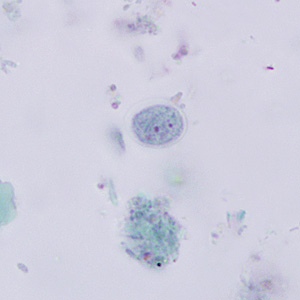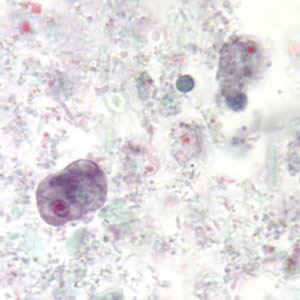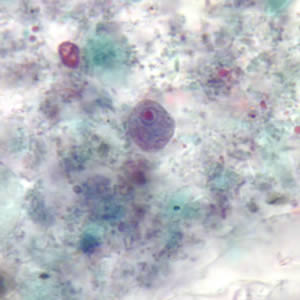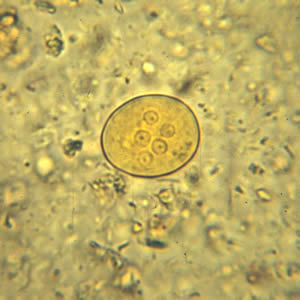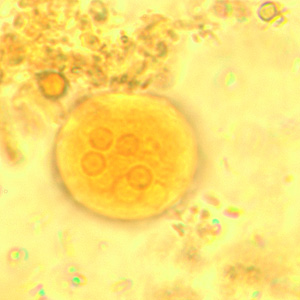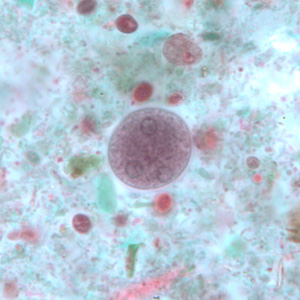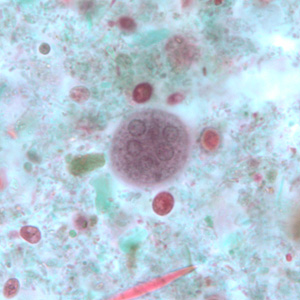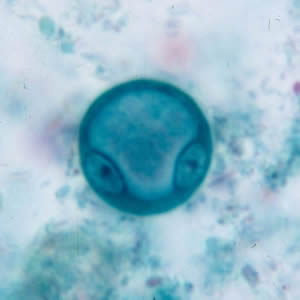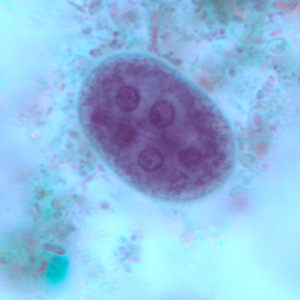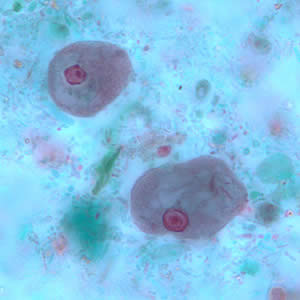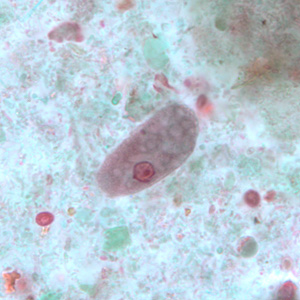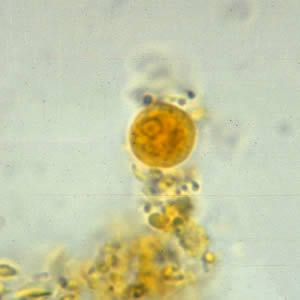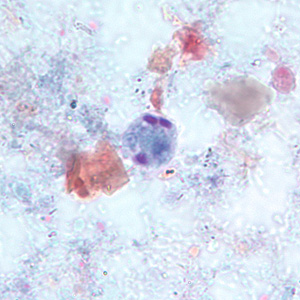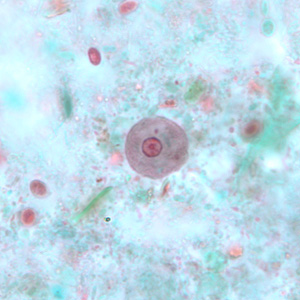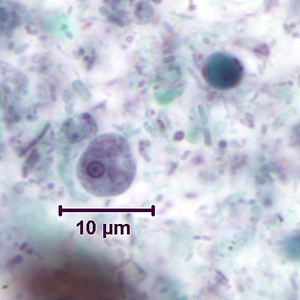Nonpathogenic intestinal amebae infection laboratory findings
|
Nonpathogenic intestinal amebae infection Microchapters |
|
Differentiating Nonpathogenic intestinal amebae infection from other Diseases |
|---|
|
Diagnosis |
|
Treatment |
|
Case Studies |
|
Nonpathogenic intestinal amebae infection laboratory findings On the Web |
|
American Roentgen Ray Society Images of Nonpathogenic intestinal amebae infection laboratory findings |
|
FDA on Nonpathogenic intestinal amebae infection laboratory findings |
|
CDC on Nonpathogenic intestinal amebae infection laboratory findings |
|
Nonpathogenic intestinal amebae infection laboratory findings in the news |
|
Blogs on Nonpathogenic intestinal amebae infection laboratory findings |
|
Risk calculators and risk factors for Nonpathogenic intestinal amebae infection laboratory findings |
Editor-In-Chief: C. Michael Gibson, M.S., M.D. [1]
Overview
For diagnosing nonpathogenic intestinal amebae infection, identification of E. coli, E. hartmanni, E. polecki, E. nana, and I. buetschlii is made by observing cysts and/or trophozoites in stool specimens, both concentrated wet mounts and permanent stained smears. They are generally considered nonpathogenic, although they have been found in the stool of patients presenting with diarrhea where no known pathogens were identified. Their presence in stool can be an indicator of fecal contamination of a food or water source, and does not rule-out the presence of other parasites. Entamoeba gingivalis is also considered nonpathogenic, but is found in about 95% of patients with gum disease and about 50% of patients with healthy gums.
Laboratory Findings
Microscopy
Endolimax nana
Cysts of Endolimax nana are spherical to ellipsoidal in shape and measure 5 to 10 µm. Mature cysts possess four nuclei with large, karyosomes and no peripheral chromatin. The nuclei are not visible in unstained wet mounts, but are visible in iodine-stained wet mounts and permanent slides stained with trichrome. The cytoplasm may contain diffuse glycogen, but lacks chromatoid bodies.
- Shown below is a cyst of E. nana in a direct wet mount stained with iodine.
- Shown below is a cyst of E. nana in a direct wet mount, viewed under differential interference contrast (DIC) microscopy.
- Shown below are cysts of E. nana stained with trichrome.
- Shown below are trophozoites of E. nana stained with trichrome.
Entamoeba coli
Cysts of Entamoeba coli are usually spherical, but may be elongated, and measure 10 to 35 µm. Mature cysts typically have 8 nuclei but may have as many as 16 or more. Entamoeba coli is the only species in the genus encountered in humans with more than four nuclei in the cyst stage. The nuclei may be seen in unstained as well as stained specimens. Karyosomes may be compact or diffuse, and are usually eccentrically located. Peripheral chromatin is present and is often coarse and granular, and irregularly arranged along the nuclear membrane, but may be more uniform. The cytoplasm of mature cysts may contain diffuse glycogen. Chromatoid bodies are seen less frequently than in E. histolytica. When present, they are usually splinter like with pointed ends and thus different from the chromatoid bodies of E. histolytica, which have rounded ends.
- Shown below is a cyst of E. coli in a concentrated wet mount stained with iodine. Five nuclei are visible in this focal plane.
- Shown bleow is a cyst of E. coli in a concentrated wet mount stained with iodine. Seven nuclei are visible in this focal plane.
- Shown below are the same cyst in two different focal planes. Eight nuclei can be seen between the two focal planes. Also, above the cyst in the first image, a trophozoite of Endolimax nana can be seen.
- Shown below are immature cyst of E. coli, stained with trichrome. Notice the presence of only two nuclei, and a large glycogen vacuole
- Shown below are mature cysts of E. coli, stained with trichrome. In this specimens, five nuclei are visible in the shown focal plane.
- Shown below are trophozoites of E. coli stained with trichrome.
Entamoeba hartmanni
Cysts of Entamoeba hartmanni are similar to those of E. histolytica but smaller, measuring 5-10 µm. Mature cysts contain four nuclei that possess a small, discrete centrally-located karyosome and evenly-distributed peripheral chromatin. Cysts may not be visible in unstained specimens. The cytoplasm in mature cysts may contain diffuse glycogen and rounded or elongated chromatoid bodies with rounded ends.
- Shown below is a cyst of an E. hartmanni in a wet mount, stained with iodine.
- Shown below is a cyst of E. hartmanni stained with trichrome. Notice the bluntly-ended chromatoid bodies.
Trophozoites of Entamoeba hartmanni usually measure 5-15 µm. These trophozoites possess a single nucleus that contains a small, compact centrally or eccentrically-located karyosome and fine, uniform peripheral chromatin. Nuclei are usually not visible in unstained specimens. The cytoplasm is finely granular. Movement in living trophozoites is described as nonprogressive.
- Shown below is a trophozoite of E. hartmanni stained with trichrome.
- Shown below is a trophozoite of E. hartmanni stained with trichrome. In the upper-right of the image is a cyst-like body of Blastocystis hominis.
